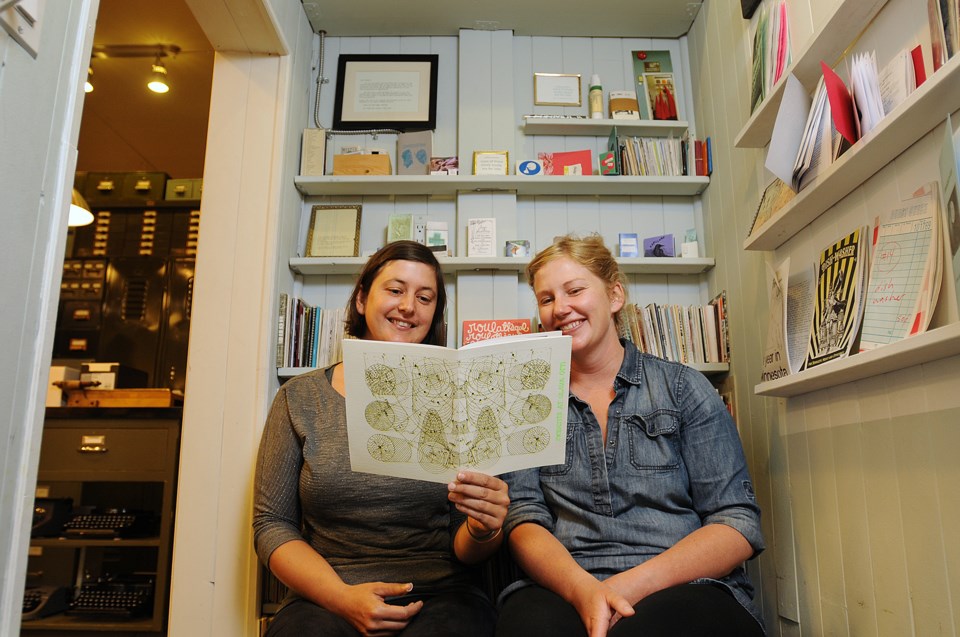The shelves are packed with thin volumes, some smaller than your thumb. The Lowercase Reading Room within Main Street’s The Regional Assembly of Text houses a collection of zines and self-published books nearing 2,000.
Brandy Fedoruk and Rebecca Ann Dolen are the co-founders and owners of the stationary and gift store, which opened in 2005. The nook beneath the property’s stairs was the Assembly’s gallery until a friend of Fedoruk and Dolen made a large donation.
“Our good friend from Mayne Island had been collecting books for 20, 30 years and she donated her collection to the reading room,” said Fedoruk. “That’s when we installed [the room] there and wanted a place for people to appreciate them and be inspired to maybe make their own.”
The Reading Room has a summer exhibit called Books on Travel Near and Far. There is a zine called The Stupid Journey on Canadian wastelands, one on B.C.’s ghost towns and another titled From Russia with Love, featuring the names, ages and sketches of women supposedly encountered by the zine’s creator.
Fedoruk and Dolen met at Emily Carr University and their love of handmade and self-published books was fostered by a series of bookmaking classes. They continue the do-it-yourself tradition at the Assembly with monthly letter writing evenings and button making.
“I think there’s something really special about things that are handmade and are tactile,” said Fedoruk. “That kind of thing is very nostalgic to people and maybe what they grew up with… People are attracted to the aesthetic of it.”
Zines are a small circulation of self-published work usually reproduced by photocopier or painstakingly by hand. They draw their roots from pamphlets used by the marginalized to spread ideas.
Whether its origins date before or after the printing press is unknown. Benjamin Franklin and H. P. Lovecraft were known to have used the medium.
The Vancouver Public Library was attracted to zines as they allowed for depth and scope from unconventional viewpoints since they are outside mainstream publishing.
The first zine collection was available at the Central Branch in 2009 with a second collection now at Mount Pleasant.
“Zines were available a lot longer before libraries,” said Caroline Crowe, a VPL librarian who was part of the committee that started the collection.
The library opted to buy zines directly from artists and local stores.
“I remember going to artists’ studios and doing purchases at small, tiny, tiny presses,” said Crowe.
Fedoruk and Dolen screen the zines they acquire from artists, fairs, stores and donors just in case, but they believe censorship limits not just content but also a dream.
“People having an idea and being able to produce it and publish it themselves allows for a lot more creativity because it’s exactly how they want it to be,” said Fedoruk. “Through publishers and all those kinds of things, the idea gets farther and farther away.”
They hope the room will inspire visitors to create something of their own or to simply share new ideas.
“It’s a perfect little space to just spend a couple hours on a rainy day,” said Fedoruk.
[email protected]
twitter.com/chrischeungtogo
VIDEO: Print's Charming
As part of the Courier's recent Vancouver Special neighbourhood series, entertainment editor Michael Kissinger visited Riley Park and the charming Regional Assembly of Text to talk fonts, paper and the lost art of letter writing.



